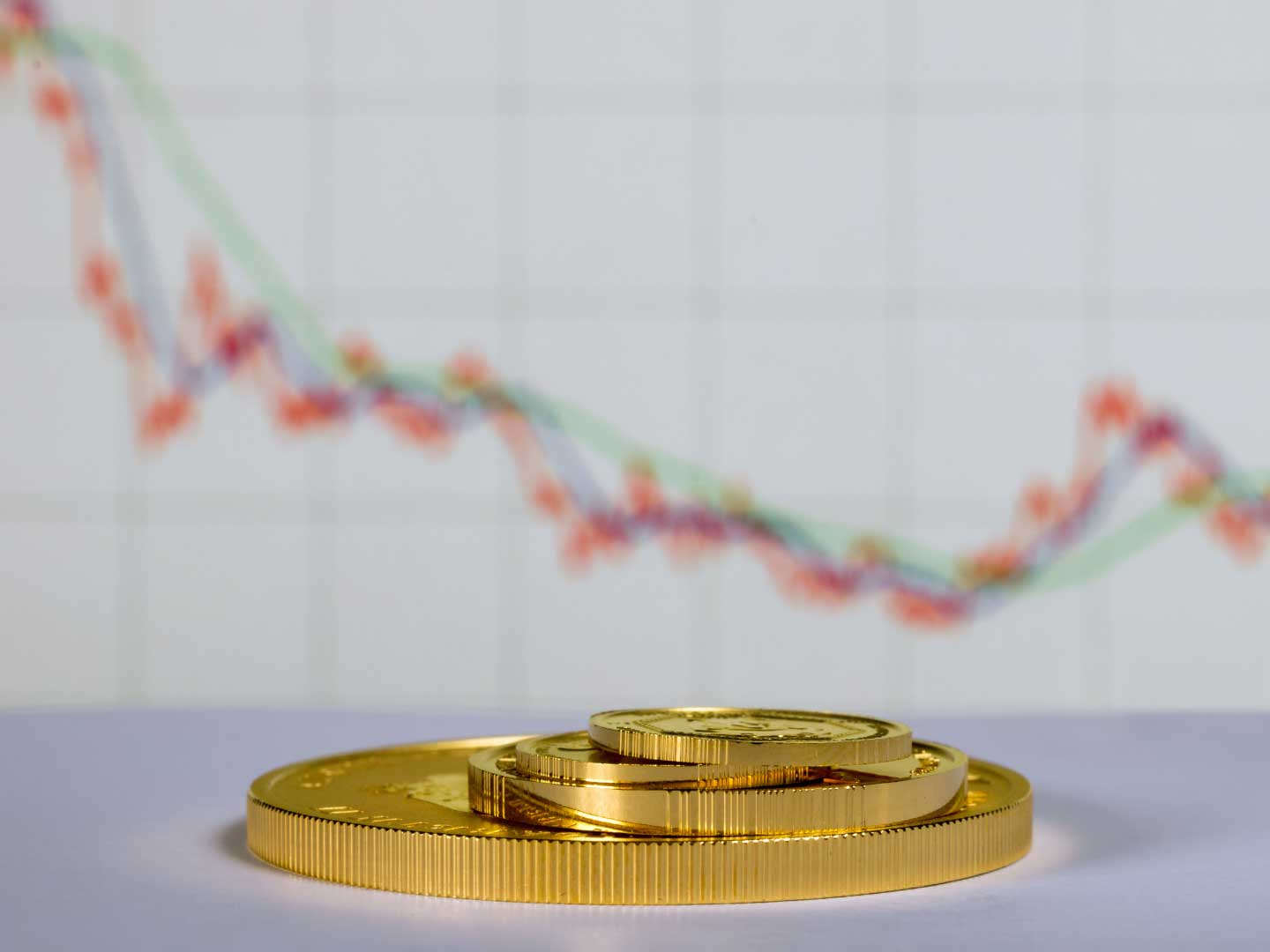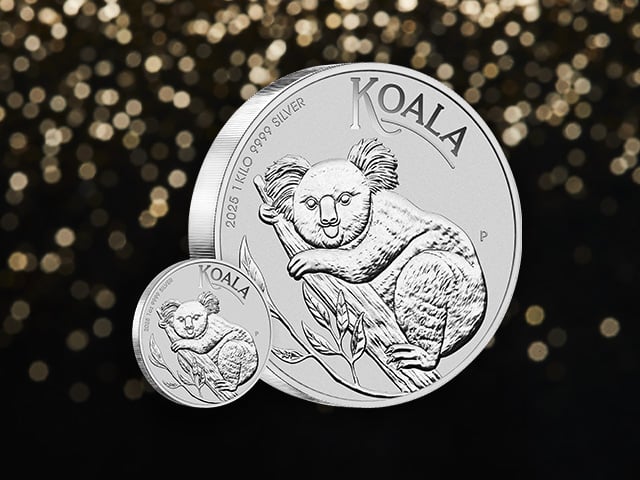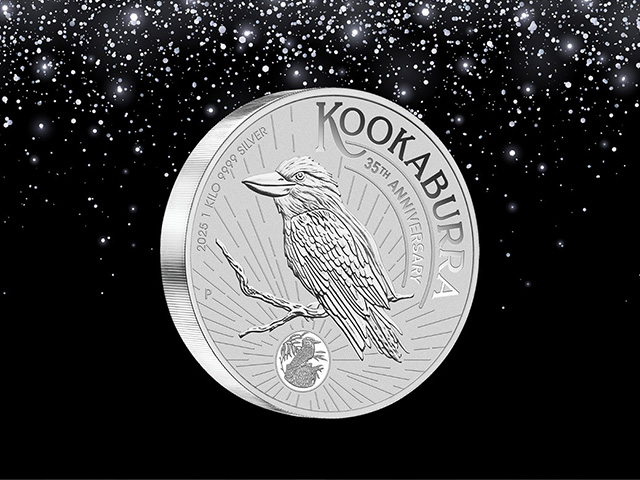All-time highs in equities drive November gold pull back

Gold remained range-bound, consolidating gains seen over the past 12 months, with the yellow metal still up by almost 20% in USD and 30% in AUD terms in the year to end November.
- Gold and silver prices corrected during the month, falling by 3.26% and 6.10% respectively in US dollar terms.
- Returns for Australian dollar investors were also negative, with gold falling 1.23% and silver down 4.37% during the month. A 1.87% fall in the value of the AUD was responsible for the more limited decline.
- The drop in precious metals was driven by investor fear of missing out as stock markets in the United States hit all-time highs, US Treasury bond yields increased and risk hedges fell out of favour during the month. The largest ever short position on the volatility index (VIX) was recorded in November.
Full monthly review – November 2019
Gold and silver prices eased as a sustained rally in US equity markets, an uptick in US Treasury bond yields and investor optimism surrounding a potential US-China trade deal weakened demand for precious metals.
In US dollar terms, gold and silver fell 3.26% and 6.10% respectively, finishing the month at USD 1,463.90 and USD 17.02 per troy ounce. Across the past year gold in USD rose by 20%. With the gold to silver ratio essentially unchanged over this period, currently sitting at 86:1, silver too experienced a 20% increase across the 12 months to November.
For Australian dollar investors a 1.87% decline in the local currency throughout November minimised the pull back. With gold and silver falling 1.23% and 4.37% respectively, the metals finished the month trading at AUD 2,166.98 and AUD 25.10 per troy ounce, still up 30% over the past 12 months.
For now, gold remains largely range-bound, as it has since early October when it first drifted down towards the USD 1,450 per troy ounce. We expect the market to be supported at these levels, though the risk of a more significant correction cannot be ruled out.
Very strong support is likely to be found near the 200-day moving average, which ended November sitting just above USD 1,400 per troy ounce.
Investor outlook brightening as US equity markets rise
A key factor driving the pull back in gold was the continued strength seen in US equity markets, with the Dow Jones, the S&P 500 and the NASDAQ all hitting multiple all-time highs during November.
Such is the strength of these markets that the S&P500 is on track to deliver one of its best calendar year returns in two decades. A basic 60/40 portfolio (60% equities, 40% bonds) looks like it will deliver its best annual return since 2009 according to a 29 November article on Bloomberg titled Records Set, Billions Minted: It Will Be Hard to Top 2019 Stocks.
Investor outlook brightened notably during November with the Bank of America Merrill Lynch Global Fund Manager Survey seeing optimism toward global growth increasing at its fastest rate in 20 years.
Investors have also sold out of safe-haven assets like bonds and cash, with holdings of the latter now sitting at six-year lows. Indeed, November saw the largest monthly fall in cash holdings since President Trump was elected into office in late 2016.
A further sign of rising optimism was seen on the VIX, a widely followed index which tracks market expectations of equity market volatility, as short bets hit all-time highs during November. This suggests that at present, market participants see little likelihood of a break-out in volatility, which would typically bolster demand for safe-haven assets.
Given the developments in broader financial markets discussed above it is no surprise that precious metal prices eased during November. This was especially likely given the scope of the rally between late September 2018 and early September 2019 which saw the price of gold in US terms rise by more than 30%.
Central banks and ETF flows
Preliminary estimates using Reuters data suggests that global gold exchange-traded fund (ETF) holdings fell by more than 2% during November, bringing an end to the impressive period of inflows which saw total global gold ETF holdings hit all-time highs in 2019.
The Perth Mint has continued to outperform its peers in the exchange-traded product space, with our ASX and NYSE-listed products both seeing growth during the month of more than 1% in terms of ounces backing each product.
Central banks remained in the news as they continued their gold purchasing and storage strategy throughout November. Most notably Poland took the decision to repatriate 100 tonnes of gold from London (worth USD 4.7 billion at November’s USD closing price), an operation carried out by logistics and security experts G4Si in a matter of months.
Poland’s move represents a buying trend that has been in place for some time now. Central banks have not only been adding to reserves across recent months but are preferring to store more of it on home soil rather than keep their entire holdings in traditional vaulting centres such as London, Paris and New York.
Political leaders in Serbia, Slovakia and Hungary have openly addressed the importance of boosting national gold reserves in 2019. Net central bank buying to end Q3 2019 totalled almost 550 tonnes, a 12% year-on-year increase.
Continued strength in central bank gold demand is something we expect will continue for the foreseeable future given the trillions of dollars of sovereign debt trading at negative yields, continued calls for the reform of the monetary system and the fragile geopolitical and economic environment we face as we enter the 2020s.
Commentary from Saxo Bank’s Ole Hansen aligns with this view. The analyst stated in an interview with Kitco News: “We have seen some pretty bold comments on gold from European central banks, and it might not take much for them to become gold buyers. Some countries are really struggling with negative interest rates. It’s really destroying wealth. Whether you are a central bank or a private investor, gold is an attractive asset in a world of negative yielding interest rates.”
Economic outlook deteriorating in Australia
In Australia, the case for gold as a long-term investment continues to gain momentum with markets now pricing in a further interest-rate cut by May 2020. This would bring the local cash rate to just 0.50% or -1.20% in real terms, assuming official inflation rates currently sitting at 1.70% stay constant in the months ahead.
More pessimistic forecasters, including Westpac Bank’s Chief Economist Bill Evans, see rates falling to just 0.25% by June 2020. Evans also expects the Reserve Bank of Australia (RBA) to implement quantitative easing (QE) at some point in the second half of 2020.
Should this come to pass, it has the potential to boost demand for gold in several ways:
- Lower interest rates themselves reduce the opportunity cost of investing in gold, helping to drive demand.
- Lower rates and QE can be expected to put downward pressure on the value of the Australian dollar. Precious metal investors would benefit from this tailwind should the AUD continue to lose value over the USD as it has done across the past 12 months.
- Finally, there is also the ‘confidence’ factor. Lower rates and QE have the potential to deflate consumer confidence which would encourage frugality rather than greater spending.
This seems to be occurring right now with news that the Australian consumer confidence index hit a four-year low in late November 2019. According to the data, Australians are particularly worried about their future financial conditions.
The latest private sector credit statistics also highlight how cautious Australian households are with overall credit growth running at just 2.5% for the year to end October 2019. That is an almost 50% decline relative to the rate of growth seen at the same time last year with falling growth rates seen across housing, personal and business loans.
In addition, data released in late November shows that total private capital expenditure also fell in Australia across the September quarter. Dropping more than 1% across the past 12 months, the reduction in capital spend indicates how cautious the Australian business community is right now.
Over time, these developments can be expected to not only limit overall economic growth, but also the returns generated by traditional asset classes.
They also reinforce the value of gold as a key component of a well-balanced investment portfolio given the metal’s historical outperformance in environments where traditional asset class returns are constrained and real cash rates are low.
Articles referenced
Australian Consumer Confidence
https://www.fxstreet.com/news/australia-consumer-confidence-drops-to-four-year-low-anz-201911260503
Credit growth
https://www.macrobusiness.com.au/2019/11/australia-plunges-towards-outright-deleveraging/
Bill Evans on QE
https://www.macrobusiness.com.au/2019/11/bonds-launch-as-westpac-declares-qe-a-go-in-2020/
Capex Intentions
https://www.macrobusiness.com.au/2019/11/capex-intentions-ring-alarm-bells/
RBA on QE
https://www.rba.gov.au/speeches/2019/sp-gov-2019-11-26.html
Bank of America FOMO
https://www.marketwatch.com/story/fear-of-missing-out-triggers-huge-fund-manager-shift-from-cash-to-stocks-bank-of-america-merrill-lynch-says-2019-11-12
Investor growth optimism
https://markets.businessinsider.com/news/stocks/investors-are-rushing-invest-in-stocks-to-calm-market-fomo-2019-11-1028681853
Record highs for stocks
https://www.marketwatch.com/story/dow-futures-flat-after-another-round-of-stock-market-records-2019-11-26
Records set for US stocks and 60/40 portfolios
https://www.bloomberg.com/amp/news/articles/2019-11-29/records-set-billions-minted-it-will-be-hard-to-top-2019-stocks
Record short bets on VIX
https://seekingalpha.com/article/4305207-vxx-record-bearish-bets-vix-futures-create-opportunity
Saxo Bank on Central Bank gold buying
https://www.kitco.com/news/2019-11-29/2020-could-see-more-European-central-banks-buy-gold-Saxo-Bank.html
G4Si gold repatriation for Poland
https://www.g4si.com/newsroom/2019/11/28/how-billions-in-gold-was-secretly-moved-from-london-to-poland
Bloomberg articles on central bank gold demand
https://www.bloomberg.com/news/articles/2019-11-29/gold-is-the-new-obsession-for-east-europe-s-nationalist-leaders?cmpid=BBD112919_MKT&utm_medium=email&utm_source=newsletter&utm_term=191129&utm_campaign=markets
https://www.bloomberg.com/news/articles/2019-11-19/keep-buying-gold-to-brace-for-crisis-serbian-leader-tells-bank?cmpid=BBD112919_MKT&utm_medium=email&utm_source=newsletter&utm_term=191129&utm_campaign=markets
https://www.bloomberg.com/news/articles/2019-11-28/u-k-can-t-be-trusted-with-gold-top-slovak-party-leader-says?cmpid=BBD112919_MKT&utm_medium=email&utm_source=newsletter&utm_term=191129&utm_campaign=markets
Support levels for gold
https://thedailygold.com/checking-in-on-gold-silver-sentiment/
https://www.sprottmoney.com/Blog/key-levels-to-watch-in-gold-and-miners.html
DISCLAIMER
Past performance does not guarantee future results. The information in this article and the links provided are for general information only and should not be taken as constituting professional advice from The Perth Mint. The Perth Mint is not a financial adviser. You should consider seeking independent financial advice to check how the information in this article relates to your unique circumstances. All data, including prices, quotes, valuations and statistics included have been obtained from sources The Perth Mint deems to be reliable, but we do not guarantee their accuracy or completeness. The Perth Mint is not liable for any loss caused, whether due to negligence or otherwise, arising from the use of, or reliance on, the information provided directly or indirectly, by use of this article.













